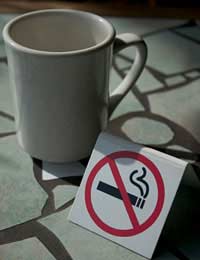Physical Dependence on a Drug or Substance

In general terms the expression of being physically dependent on something is highly overused in everyday conversation; in professional circles however, the term is being used less frequently.
This is because of the complexities and the difficulty in generalising addiction. It has always been thought that there are two contributing factors to addiction, these being psychological addiction and physical addiction and the two are extremely closely connected and differences are difficult to explain without the other encroaching in to the explanation.
General Descriptions of Physical Dependence
A loose explanation of a physical dependence can be when the body has become dependent on the substance and by continuing to take the substance, symptoms of withdrawal are kept at bay or minimised. The body is said to be in need of the substance to be able to function and withdrawal occurs as soon as the regular intake of the drug is stopped or withheld.The general symptoms of physical dependence caused by the usual substances associated with drug or substance addiction can be all, one or something different from the following: nausea, vomiting, shaking, chills and headaches.It should be noted however, that physical dependence can result from taking many legitimately prescribed medications; those given for heart or circulatory disorders are examples of this, when if discontinued, the body displays certain physical symptoms as a consequence.
Consideration should also be given to the facts surrounding physical tolerance. Slightly different from dependence, tolerance occurs due to the body becoming ‘used’ to a substance whereby the body requires higher doses or more frequent usage to achieve the desired effect, or the same effect that a lower dose once achieved. The body and its biological processes, structures and cells adapt to the presence of the substance and become tolerant of it, so using the same amount all of the time produces less and less affect.
Some substances cause a low mood or lack of energy when being used, (downer) so a substance is sometimes used to lift these effects (uppers). If a greater amount of a downer is used, a greater amount of an upper will be needed to rebalance the body, resulting in a duel dependency.
Substances That Cause The Greatest Dependence
Excessive alcohol consumption is known for its ability to develop a physical dependence in the user. Many alcoholics need to ingest greater and more frequent amounts of alcohol to keep withdrawal symptoms to a minimum, if they don’t they will experience the effects very quickly and some can be very unpleasant. This contributes to how early drinking develops.Nicotine is also known for being a cause of physical dependence, though many people admit to smoking cigarettes in a social environment only. Others need to keep smoking very regularly to achieve a balance, and to suppress withdrawal.
Physical dependence is a consequence of addiction, though it is very closely linked to psychological dependence and therapists and rehabilitation units will treat both problems simultaneously. Once the initial period of withdrawal is being managed, assessments will take place to discover the level of addiction and treatment plans will be decided using the results.
- Step-By-Step Brain Path to Addiction
- Overcome an Addiction to Plastic Surgery
- Mental Health and Addictions
- Addiction and the Law
- The Relationship Between Addiction and Crime
- Addictions Through History
- Drug Addiction in Britain
- Risks of Injecting Substances
- Addictive Personalities
- How Stress Can Lead to Addiction
- Pseudoaddiction and Misinterpretation of Symptoms
- How Does Addiction Affect Peoples' Minds?
- What are the Risk Factors of an Addiction?
- What is Codependency?
- Physiological Effects of Addiction
- The Role of Genetics in Addiction
- Involuntary Addiction to Prescribed Drugs
- Physical Effects of Alcohol
- Physical Effects of Nicotine
- Physical Effects of Opiates
- Physical Effects of Tranquillizers
- What is an Addiction?
- Recognising You Have an Addiction
- The Social Effects of Addiction
- Physical Effects of Solvents
- How Do Addictions Start and What Causes Them?


Re: Addiction to Shopping
Hi, I came to realize that I have shopping addiction and it’s getting out of control. I need help but I don’t know where to start. I would…
Re: Beating an Addiction to Pornography
I am in a long term relationship and have a fulfilling sexlife, but i struggle with porn, i feel the need and temptation…
Re: Offering Support to an Addiction Sufferer
My big sister died of a brain tumor then 6 week later my mum went too . I have multiple myeloma and am terminal.…
Re: Addiction to Shopping
I am now at my whits end, my husband is spending money like it has gone out of fashion, and now i am homeworking, I take in the deliveries…
Re: How to Assess The Level of an Addiction
Over a series of many years I have discovered that I have an addicted personality, it has never worried me too much…
Re: How to Assess The Level of an Addiction
Over a series of many years I have discovered that I have an addicted personality, it has never worried me too much…
Re: Offering Support to an Addiction Sufferer
I am an addict and I have just separated from my husband of 16 years as we together developed a cocaine problem.…
Re: Recognising Alcohol Addiciton
Ever since I can remember, I've always overindulged before/during social events. It's got to the point where I've been hateful to…
Re: Beating an Addiction to Chocolate
I suffer from anxiety and mild depression. As a stay at home mum I find myself bored sometimes and truthfully stressed. My…
Re: Offering Support to an Addiction Sufferer
Hi im dpeaking on behalf of my partner , who has a bad alcohol addiction..And this has been going on for neaely…